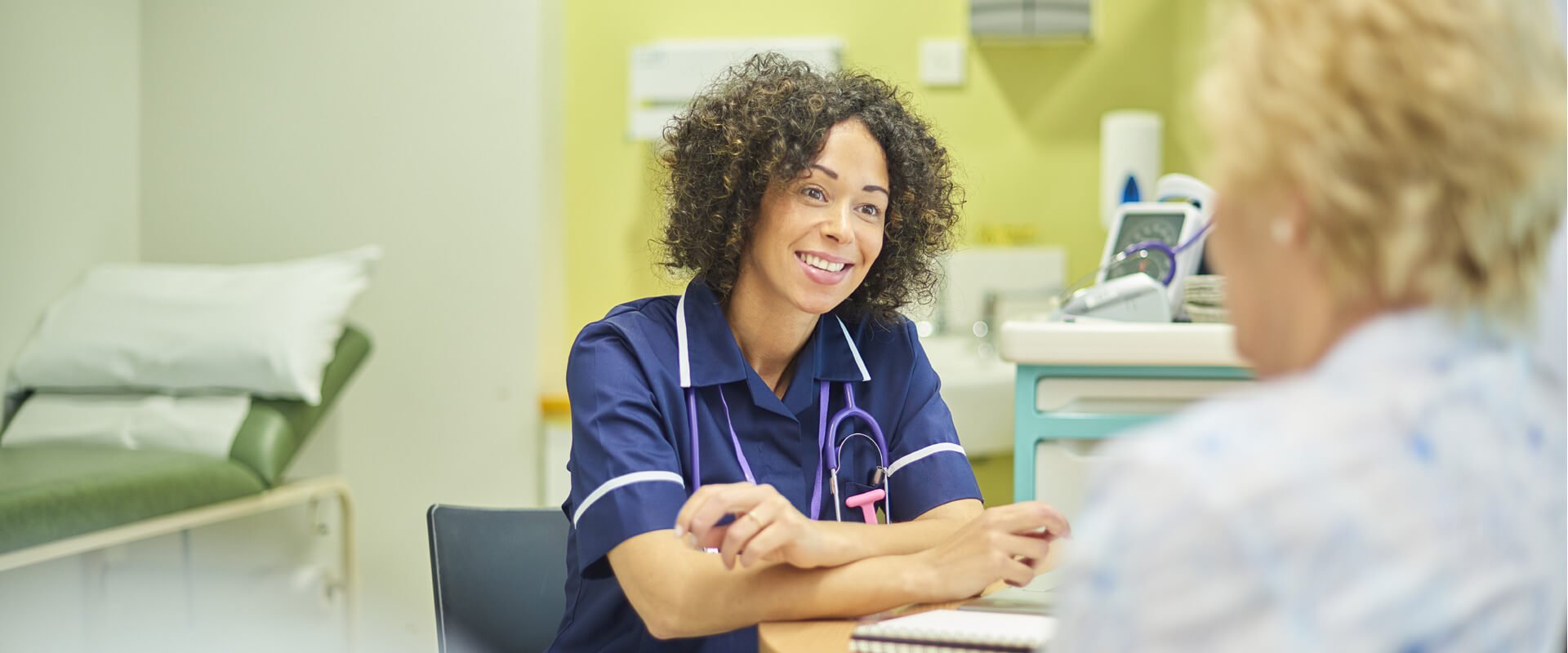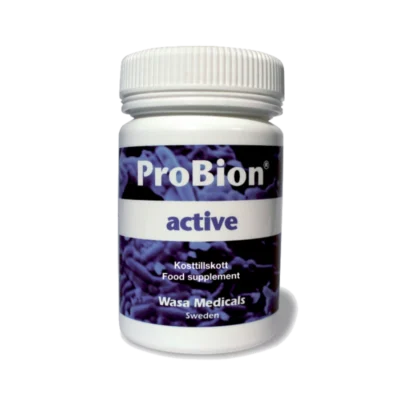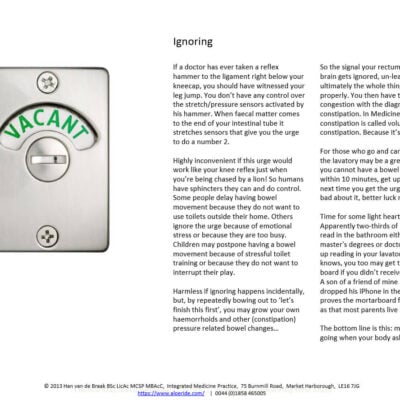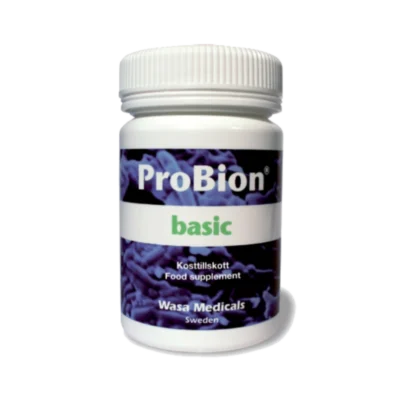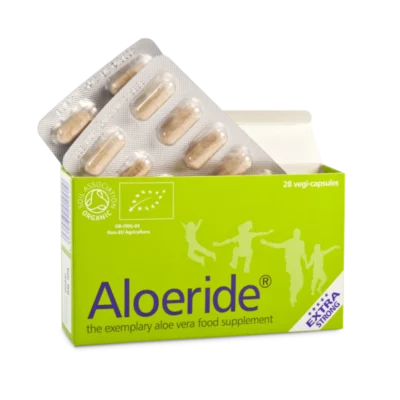News on how to help diverticulitis yourself

What diverticulitis looks like
Picturing what diverticular disease is, may be more pleasant if you think of a traditional bicycle tyre with a flexible inner tube (gut lining) and a firm outer tube (gut muscle). As pumping air into the inner bicycle tube would, the pressure (in the gut) goes up due to its content. If there is any weakness in the outer tube, the inner tube can force a hole, protrude through it and form a little balloon (diverticula) on the outside. These look like marble-sized pouches protruding through the colon wall, click here if you wish to see what diverticulitis looks like during colonoscopy (endoscopic examination). Mercifully there’s lots you can do to subdue painful diverticulitis into painless diverticulosis.
Words that you want to understand
Diverticulosis: when such pouches are present but are neither inflamed nor painful.
Diverticulitis: when such pouches are inflamed and thus painful.
Uncomplicated diverticulitis: when such pouches are inflamed and thus painful; some bleeding may occur (SUDD simple uncomplicated diverticular disease).
Complicated diverticulitis: when such pouches become infected and form abscesses (fortunately rarely fistulas), this builds up pressure inside the pouch which may lead to free perforation (the pouch ruptures) which leads to faecal peritonitis. Other complications are strictures (as recurring micro-inflammations cause scar tissue) and/or obstruction (no evacuation of faeces).
Diverticula: one such protruding pouch.
Diverticular disease (DD): general name for the condition wherein diverticula form in the wall of the large intestine (sigmoid > colon).
“I just can’t thank you enough for having designed this wonderful remedy. It must be 12 or more years since I found you, following a hospital admission where there was a possibility I might have my entire colon removed due to extremely bad diverticulitis. I discharged myself and shortly afterwards started taking Aloeride which I have taken every day ever since then. On the extremely rare occasion when I have had a slight twinge of abdominal pain, I have simply taken 2 Aloeride a day instead of 1 for a couple of days and it’s sorted the problem. Thank you for saving my colon!” Angela Waters
Will diverticulitis go away
Whereas you can buy a new outer tyre for your bicycle, you cannot grow a new muscular wall to cover a hole in your gut wall. It wouldn’t help resolve the existing pouch outside the hole anyway. Pouches are permanent unless the affected part of the intestine is surgically removed. However, before surgery becomes the only option, you can change the odds in your favour and become someone with diverticulosis who lives out their life hardly being bothered by symptoms. You can speed up repair of your gut muscles, you can placate and avoid inflammation, you can reduce the pressure in the inner tube. You can subdue diverticulitis into diverticulosis without prescribed medication.
“Dear Han. Before I went on to taking Aloeride I had suffered with diverticular disease for about twenty years, with many outbreaks, taking many antibiotics, which made me feel pretty awful, and took ages to clear up. Then ten years ago started, through you, taking Aloeride, I take two capsules every morning before my breakfast, and I hardly ever have attacks now, which has completely changed my life. I would tell any sufferer to try Aloeride, it might take a month or so to click in, but certainly really worth it, I could not think of going without it now. Every good luck to any suffers. Best wishes Caroline.”
Diverticulitis and location (planet)
In Europe, the United States and Australia approximately 50% of the population 60 years of age and older have diverticulosis (i.e. diverticula without these causing symptoms). This occurrence is in contrast to that in the developing world, where countries in Africa and Asia have prevalence rates of less than 0.5%. Sadly at our end of the pond there also is an increasing incidence of diverticulitis among individuals younger than 40 years of age! Diverticulitis is a diet and lifestyle problem. This is good news because you have a say in the matter on both counts. Follow our simple tips and put the odds in your favour.
Diverticulitis and location (gut)
Most diverticula occur in the sigmoid, that is the colon before the rectum and the anus. Strong contractions of the sigmoid’s circular muscle build up extremely high intraluminal pressures. Simply put, the more difficult it is to get faeces ‘through and out of the tube’, the higher the pressure needs to be. The harder you pump up a bicycle tyre, the stronger the outer tube needs to be. The weakest link, the usual position for diverticula, is where the mesenteric blood vessels pass through the circular muscle coat to supply the mucous membrane (part of inner tube) with blood (i.e. oxygen and nutrients). So, in diverticulitis where is the pain located? Mostly in the lower, left side of your abdomen. Small bowel diverticulosis is rare and small bowel diverticulitis is rarer still.
Common symptoms
Intermittent, crampy, left sided, lower abdominal pain, bloating (increase in abdominal size due to gas resulting from fermentation), change in bowel habit (diarrhoea or constipation) and mucous or blood in the stool. Pain and bloating can often start after food is eaten (inner tube inflates) and may ease when a stool or wind is passed (inner tube deflates). You may experience diarrhoea one day and constipation the next. Diverticulitis has this in common with IBS-M (mixed or alternating irritable bowel syndrome) and other bowel diseases such as IBD and colon cancer. When the bowel wall becomes irritated/inflamed, your body responds by softening your stools to the point of diarrhoea, so it won’t irritate the wall by friction that formed stools would exert. Once the wall has healed sufficiently, an unchanged diet and lifestyle would return you to the old pattern of slow faecal transit i.e. constipation. Our e-booklet on how you can help constipation gives you many tips to resolve that!
“For me Aloeride has been a Godsend.” Alex Brown
 If you want to try our Aloeride SUDD ½ price trial offer… click the green pack below, add 1 or 2 to your Basket, then go to Checkout where you will see that automatically your one-off coupon was applied! In your parcel you will find a further coupon if you want to extend the trial.
If you want to try our Aloeride SUDD ½ price trial offer… click the green pack below, add 1 or 2 to your Basket, then go to Checkout where you will see that automatically your one-off coupon was applied! In your parcel you will find a further coupon if you want to extend the trial.
-

-
Sale!

eBook Push constipation out of your life
Original price was: £48.00.£1.20Current price is: £1.20. -

-

“Received my order two days after I ordered that is very good as we live on Isle of Wight the product is very helpful to me I ran out on holiday and I certainly felt the difference back on them, feel great! Thanks aloeride, Val Williams”
Tips for diverticulitis
Keeping to the bicycle tyre example: problem 1) high pressure in the inner tube and problem 2) strength of the outer tube. To be sure, 2) is not a design fault of Nature. The occurrence of diverticulitis in Africa and Asia being 100 times less than it is in Europe/United States/Australia says it all… As far as 1) goes, the pressure necessary to make the faecal mass move, depends on the composition of faecal mass. That composition depends on two things: solids + fluids (water and oils).
Solids: Foods that are good during an episode of diverticulitis differ a lot to foods that are good for diverticulosis (see further down). Dietary advice for diverticulosis -many lesser known pitfalls of constipation are covered in the booklet- is mentioned below. Dietary advice for diverticulitis is mentioned below also.
Water: No this is not just drinking water (2-2.5 litre a day for sedentary adults), although it starts with that of course. By the time indigestible materials have reached the colon, most nutrients and up to 90% of the water has been absorbed by the small intestine. So how do you encourage the remaining 10% of water to stay in the sigmoid colon and rectum to keep faecal content soft. From the above you know that certain fibres retain water. A survey of 300 GPs in the UK found that a fifth of all doctor’s appointments are down to tiredness and fatigue (known as TATT: Tired All The Time). Most patients presenting with TATT -in the absence of serious issues- are dehydrated.
Oil: A teaspoon to a tablespoon of olive oil in the morning can help to lubricate the insides of the bowel and allow a smoother passage of content. In 2015 the Journal of Renal Nutrition published that olive oil, flaxseed oil and mineral oil were all equally effective at relieving symptoms of constipation. Oil can function as softeners if their intake exceeds the absorptive capacity of the small intestine (min 1 tsp, max 1 tbsp). A little bit of oil can help you reduce high pressure in ‘the inner tube’.
Anti-inflammatory: You cannot take nonsteroidal anti-inflammatory drugs (e.g. Ibuprofen or Aspirin) because these increase the risk of bleeding and other complications. You can eat natural foods that have anti-inflammatory properties such as the curcumin, safe and helpful Aloeride aloe vera and certain vegetables that we use in the clever smoothies. In diverticulitis 1 vegetarian capsule of aloeride twice a day is a good start that can be complemented by a tablespoon of turmeric in a smoothie daily but do read up how to make the latter palatable. Also, very regular respiratory-rate- and heart-rate-stimulating exercise is an important tool to counteract both dyslipidemia (e.g. abnormal cholesterol, triglycerides) symptoms and systemic inflammation. Everything to control inflammation is in your blood, pump it around more vigorously and more regularly and unsurprisingly any systemic inflammation becomes less. Good news and not just for diverticulitis! Managing your blood lipids (Total Cholesterol, HDL/LDL ratio) is so easily helped by a high fibre intake (yep that’s a diet to include clever smoothies).
“Hey, I just wanted to tell you how much your product has changed my life, I started using Aloeride tablets in January after a friend that uses them bought some for me, I have struggled all my life with problems with a sluggish bowel, chronic constipation and ibs, I was starting to feel so low and down after endless trips to doctors and consultants, over a period of 20 years having tried so many tablets and medication from different specialists I never thought anything would work. I have now been taking aloeride for 6 months and can’t tell you what a difference this product has made to my life no problems no trips to doctors and no prescribed medication needed. Thank you so much I truly feel like I have a new body. Kathryn Evans”
Diverticulitis which foods to avoid
In diverticulitis (inflammation) you want foods that neither brush the inflamed areas (hence low fibre) nor inflate the inner tube (hence no fermentables). Limit foods that are high in FODMAPs (fermentable oligosaccharides, disaccharides, monosaccharides and polyols) so you don’t inflate the inner tube. The keyword is fermentable, fermentation produces gas, gas inflates inner tube, this may upset the pouches. FODMAP avoids apples, pears and plums; dairy foods e.g. milk, yogurt and ice cream; fermented foods e.g. sauerkraut or kimchi; beans, cabbage, Brussels sprouts, onions and garlic. Personally I think that foods that have been properly fermented outside the body are fine. For instance, the Specific Carbohydrate Diet advocates double fermented yoghurt (i.e. 24hr instead of 12hr fermenting in a pan) so you get the goodness of probiotics but no gas formation inside your inner tube. Candida overgrowth (SIBO) is another contributor to inflating one’s inner tube and this very much has to do with bowel flora (microbiome). Recent studies have identified significant changes in the microbiome of patients suffering from diverticular disease such as an excess of mucus degrading species. [Source: Gut microbiota, metabolome and immune signatures in patients with uncomplicated diverticular disease. Barbara G, Scaioli E, Barbaro MR, Biagi E, Laghi L, Cremon C, Marasco G, Colecchia A, Picone G, Salfi N, Capozzi F, Brigidi P, Festi D Gut. 2017 Jul; 66(7):1252-1261.] Brushing and fermentation is what you need to avoid, certain probiotics can help to alleviate constipation which would benefit the diverticula. Avoid fibre-rich foods: wholegrain breakfast cereals, wholewheat pasta, wholegrain bread and oats, barley and rye, berries, pears, melon and oranges, broccoli, carrots and sweetcorn, peas, beans and pulses, nuts and seeds, potatoes with skin.
Diverticulitis which foods to eat
As soon as an episode of diverticulitis (inflammation) starts, you change to a liquid diet for a few days. Bowel rest is akin to intermittent fasting aided by one vegetarian capsule of Aloeride at your washstand in the morning and potentially another one at night. What can you ingest safely when you suffer from an episode of diverticulitis:
- Filtered water and herbal teas ad libitum
- Clear broths and very finely puréed soups (use a hand blender) ad libitum
- Premium quality non-latex aloe vera
- Natural full-fat yogurt (listed in FODMAP but beneficial to gut microbiome i.e. ingest with discretion and ideally make double-fermented yoghurt)
- Fruit and raw vegetable juicing (i.e. not smoothies because smoothies contain pulp), do avoid making juices sweet (i.e. keep them low glycaemic index and avoid cartoned/bottled juices as these tend to be sweeter than you think) and by the way, the seeds in tomato, zucchini, cucumber, strawberries, raspberries do not aggravate diverticulitis; nor does sesame seed. Good practice to take lectins (see below) into account and deseed and skin tomatoes, peel zucchini, peel cucumbers.
- Rice (basmati or white)
- Mashed potato (peel beforehand)
- Egg white and yoke
- Gelatin (e.g. make collagelatin and sugar-free green juice blend gummies)
The more digestive rest you give your intestines, the quicker acute diverticulitis can be remedied by your innate ability to do so. If you do not feel better within two or three days then you may wish to see your medical doctor.
Can fasting help diverticulitis
For a very long time, bowel rest has been part of the conservative treatment of acute colonic diverticulitis. Mount Sinai researchers found that fasting reduces inflammation and improves chronic inflammatory diseases without affecting the immune system’s response to acute infections. It reduces the release of pro-inflammatory cells (monocytes) in blood circulation and, during caloric restriction, these cells go into sleep mode. Your benefit is reduced inflammation, increased production of beneficial microbial compounds known as short chain fatty acids (SCFAs) and, useful long term, increased microbial richness and diversity (e.g. increased levels of beneficial gut bacteria such as Akkermansia muciniphila, Faecalibacterium and butyrate-producing Roseburia intestinalis). Butyrate is a SCFA that helps control inflammation and supports the gut barrier (which keeps bacteria and other microbes from entering your blood).
You keep to a diet of clear liquids only for a few days and increase the Aloeride dosage. As soon as symptoms abate, you gradually add soft solids (see above Diverticulitis which foods to avoid, Diverticulitis which foods to eat) and move to a more normal diet over a week or two (see above what to eat in Diverticulosis).
Diverticulosis which foods to eat
In diverticulosis (no inflammation) you want foods that stimulate peristalsis. So, eat fibre-rich foods: wholegrain breakfast cereals, wholewheat pasta, wholegrain bread and oats, barley and rye, berries, pears, melon and oranges, broccoli, carrots and sweetcorn, peas, beans and pulses, nuts and seeds, potatoes with skin. Ingest clever smoothies a few times a week. Drink plenty of (filtered) water. Take daily exercise, nothing exotic, brisk walking will do…
Africans/Orientals consume a high roughage (i.e. diverticulosis -preventative) diet with high fibre content and have a short transit time of about 18 to 36 hours (1½ days). Europeans/Americans/Australians with a low residue diet have an estimated transit time of 3 to 7 days. A high fibre diet is associated with increased stool volume, increased stool weight and decreased transit time. Dietary fibres are end-products of the metabolism of plant polysaccharides that are not absorbed in the gastrointestinal tract. These complexes include: celluloses, hemicelluloses, lignins, pectins, mucillages and gums. Celluloses and hemicelluloses have water retention properties (see water below) and increase faecal weight. The simplest and very healthy way to tick the plant roughage box is to ingest a clever smoothie a few times a week. Note that our clever smoothies are fantastic when you have diverticulosis, it is best to put them on hold during an episode of diverticulitis.
Lectins
Because lectin-containing foods drive micro-inflammation and gastro-intestinal symptoms, this too may be of interest for diverticulitis. A lectin is a spiky, carbohydrate-binding protein of non-immune origin that agglutinates (clump) cells. They bind easiest to sialic acid which is a type of sugar found in your gut, brain and nervous tissue. Secretory immunoglobulin A (sIgA) is the dominant immunoglobulin in the gut mucosal surface giving the mucosa specialised innate and adaptive defense against ingested pathogens, their toxins and lectins. When that sIgA barrier fails, normally Tight Junctions (TJ in diagram below between endothelial cells open up, and you will have a Leaky Gut. Meaning that substances in your gut that should not enter your blood stream now can. Cardiothoracic surgeon Steven Gundry MD FACS FACC advocates a lectin-avoidance diet.
Here are some it-costs-you-nothing-to-try-for-a-month kitchen tips that may help to prolong your pain-free diverticulosis stages. Raw legumes (beans, lentils, peas, soybeans, peanuts) and whole grains like wheat contain the highest amounts of lectins. Wet high-heat cooking (boiling, stewing) or soaking in water (as you do with lentils – soak and rinse) for several hours can inactivate most lectins. Lectins are water-soluble and typically found on the outer surface of a food, so exposure to water removes them. Always skin and de-seed tomatoes*, use a vegetable peeler for capsicums**, courgettes and pumpkins. Boiling potatoes deactivates lectins. Roasting destroys 98-100% of peanut lectins. White basmati rice has fewer lectins than other rice varieties. Pressure-cook your legumes. Focus on pasture-raised meats and eggs, wild-caught seafood, fermented veggies e.g. sauerkraut, Italian or French cheeses, natural butter, fruits in season (e.g. dark berries), dark, leafy vegetables (celery, kale, spinach, romaine lettuce) and okra, good fats (olive oil/avocados). The book The Plant Paradox by Dr. Steven R Gundry MD can be bought second-hand online for very little money.
*How to peel tomatoes: cut a cross into the base with a knife, put tomatoes into a bowl and cover with boiling water, set aside until skins lift, transfer to a bowl of cold/ice water, set aside to cool, when cool, peel skins off.
**Peel the ‘bulging’ parts first, then length-wise, quarter the bell pepper, deseed, then peel the skin off the ‘dips’.
Diverticulitis can it kill you
Uncomplicated diverticulitis will not kill you but complicated diverticulitis may. Wise therefore to act before a manageable, uncomplicated gut problem becomes a complicated one. Diverticulitis is regarded as the most common cause for colorectal perforation and is associated with a substantial mortality rate during emergency surgery. The mortality rates after surgery for complicated diverticulitis are between 6% and 17%. If there is free perforation and faecal peritonitis (inflammation of the tissue that lines the inner wall of the abdomen and covers and supports most of your abdominal organs) then mortality rates drop to between 22% and 39%. Fortunately in ~85% of cases, diverticulitis can be treated conservatively. Not exactly news on how to help diverticulitis yourself, but prevention is the best course, so change your diet and lifestyle.
Diverticular disease and genetics
There may also be genetic causes (e.g. TNFSF15 being one). Western people develop diverticulosis in the last third of the colon, while people in Asian countries (such as Japan, Taiwan and Singapore) generally develop diverticulosis in the first section of the colon. In the Japanese population living in Hawaii, the risk of diverticulosis is higher than those living in Japan. However, when diverticulosis develops in these people, it is still in the ‘Japanese’ location i.e. the first third of the colon. Also in Japan however, several early studies reported the prevalence of diverticulosis based on the barium enema examination: 1.6% in 1975, 7.8% in 1983, 13.3% in 1987, 15.7% in 1995 and 23.6% in 2000 which underpins that genetics is but a small aspect of an increasingly common problem. Genetics do not increase a prevalence of 1.6% to 23.6%.
Diverticulitis and age
Gone are the days that diverticulitis was a disease affecting mainly older people. People under 40 now present with this problem! Diet has changed dramatically resulting in a pandemic rise in diabetes, hypertension and obesity. In the early 20th Century, colonic diverticula rates were 2% to 10%. More recently, up to 50% of individuals older than 60 years of age have colonic diverticula, with 10% to 25% developing complications such as diverticulitis. [Source: Fourteen-year study of hospital admissions for diverticular disease in Ontario. Warner E, Crighton EJ, Moineddin R, Mamdani M, Upshur R, Can J Gastroenterol. 2007 Feb; 21(2):97-9.]
Will diverticulitis heal without antibiotics
The cornerstone of management for uncomplicated diverticulitis (inflammation) is antibiotic therapy (to reduce the chance of infection) and bowel rest (to quickly reduce pressure). Two randomised controlled trials suggested that an observational approach to acute uncomplicated diverticulitis is not inferior to antibiotic treatment and does not result in increased complication or recurrence rates. [Source: Management of Acute Uncomplicated Diverticulitis May Exclude Antibiotic Therapy. Mayl J, Marchenko M, Frierson E; Cureus 2017 May 15;9(5):e1250] Bowel rest is critical always, but more important than antibiotics are anti-inflammatory molecules. Inflammation may play a role in the early pathogenesis of diverticulosis, it is found in colonic diverticula without evidence of clinical diverticulitis. [Source: Diverticular disease in the elderly. Comparato G, Pilotto A, Franzè A, Franceschi M, Di Mario F; Dig Dis. 2007; 25(2):151-9.] This is where a high dosage, pure, non-latex aloe vera can be of particular, natural benefit. My clever smoothies would help diverticulosis in particular or if diverticulitis is not acute.
Can diverticulitis cause anaemia
Just like heavy periods can cause anaemia, a ruptured blood vessel in the wall of a diverticulum can lead to bleeding into the colon. Depending on how high up the colon bleeding occurs, you will see blood in your stools (faeces may be dark and tarry-looking) or blood from anus and, if this goes on for long enough, it can cause anaemia. Symptoms may ease by increasing your intake of Iron, vitamin B12 or Folate but it would be wiser to increase nutrients that are known to speed up wound healing so the bleeding stops as quickly as possible.
Are diverticulitis and IBS related
Only in so far that those suffering from IBS-C (constipation predominant IBS) and those suffering from IBS-M (mixed or alternating IBS, switching from constipation to diarrhoea and back) go through episodes of lower faecal transit time, harder stools and thus will exert higher pressure to evacuate. It is only in that way that the two are ‘related’.
Can diverticulitis cause weightloss
Significant, rapid and unexplained weightloss always must be investigated by your GP. When diverticulitis causes lower abdominal pain, bloating and possibly mucus or blood in the stool, it may affect your appetite, so you may gradually lose weight. Given that increased body mass index (BMI), waist circumference and waist-to-hip ratio significantly increase the risks of diverticulitis and diverticular bleeding, weight loss may be a welcome side effect.
How to buy your one pack or two packs Aloeride SUDD ½ price trial offer
Further up on this page you see the green pack which is your Aloeride SUDD ½ price trial offer. Because, when you add 1 pack (note you can buy 2) to your basket and go to the checkout, you will see (-£12.50 [Remove] when you buy 1 or -£25.00 [Remove] when you buy 2) meaning that 50% was AUTOMATICALLY deducted from your bill. In your parcel we will include a further coupon, so you can extend your trial for a bit longer at a much reduced price. This introductory coupon code SUDD works one time only. If you know somone with Diverticular Disease then do let them know about Aloeride.

